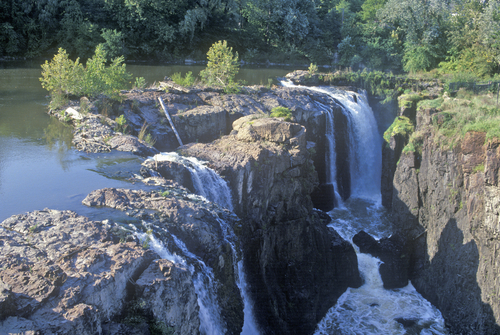 |
It began in 1984 when the EPA added what is known as the Diamond Alkali site in Newark, New Jersey, to the Superfund list. The Diamond Alkali facility produced the notorious Agent Orange pesticide during the 1960s, a byproduct of which is the equally notorious chemical dioxin. Other contaminants released by the many potentially responsible parties (PRPs) include polychlorinated biphenyls (PCBs), heavy metals such as mercury, pesticides, and volatile organic compounds (VOCs). Today, the EPA has identified about 100 facilities involved in polluting Newark-area land and water making them legally responsible to contribute to costs of cleanup.
To stem the flow of contaminants from the facility sites to the water, the EPA first tackled land cleanup through immediate and interim remedial actions that included land excavation and removal, vacuuming, and geofabric covers to prevent contaminant migration. Meanwhile, the fisheries along the Passaic River, its tributaries, and Newark Bay were closed and “Do Not Eat” advisories have long been issued for fish and shellfish that are highly contaminated with mercury, PCBs, and dioxin. The land-based remediation began in 1983 and continued through 2001.
Forget expensive calls to lawyers and consultants. With Enviro.BLR.com, you get instant access, 24/7. Try it out today and get the 2014 EHS Salary Guide, absolutely free. Download Now.
Now the EPA will address one of the most difficult portions of its cleanup activities—the lower 8 miles of the Passaic River. The remediation will be based on findings from a 7-year focused feasibility study and the proposed plan was developed in consultation with the New Jersey Department of Environmental Protection, the U.S. Army Corps of Engineers, the U.S. Fish and Wildlife Service, and the National Oceanic and Atmospheric Administration, and representatives of many communities along the lower Passaic River.
During the investigation period, the EPA developed two separate studies, one for the entire 17-mile Lower Passaic River, which is still ongoing, and another for the lower 8 miles of the river. An additional study is being conducted in Newark Bay by one PRP. The lower portion of the river contains a reservoir of contaminated fine-grained sediment that is 10-to-15 feet deep, 4.3 million cubic yards of which will be dredged and removed. Once removal is complete, the dredged area will be covered with a protective cap consisting of 2 feet of sand. Dredged areas along the shore will be covered with a cap of sand 1-foot deep with an additional 1 foot of materials that support plant and wildlife habitat. The cap will be monitored and maintained to ensure ongoing protection.
Everything You Need for Environmental Compliance
Enviro.BLR.com puts everything you need at your fingertips, including practical RCRA, CAA, CWA, hazardous waste regulatory analysis and activity, news, and compliance tools. Try it at no cost or risk and get a FREE report.
This dredging and removal will be the third to take place at the Superfund site. The first, in 2012, involved the removal of about 40,000 cubic yards of the most highly contaminated sediment near the Diamond Alkali facility. These sediments were treated and shipped to licensed disposal facilities. Dredging of another highly contaminated area north of the mouth of the river began in 2013 and when complete will remove approximately 16,000 cubic yards of sediment. For the lower river project, EPA’s proposed plan includes several options for managing the contaminated sediments and both air and water quality will be monitored during the work.
Like all Superfund projects, the EPA has and will continue to doggedly pursue PRPs to hold them responsible for funding investigations and cleanup activities at the site, and so far they have been managed to fund most of the work through PRPs. The EPA intends to finalize its lower river cleanup plan by early 2015.
